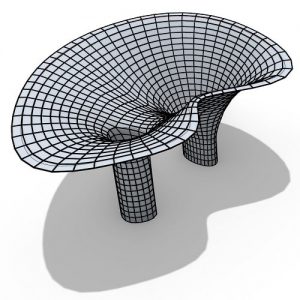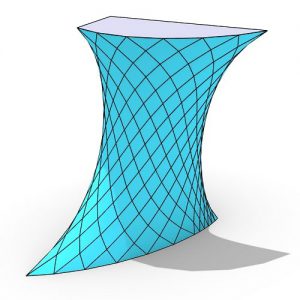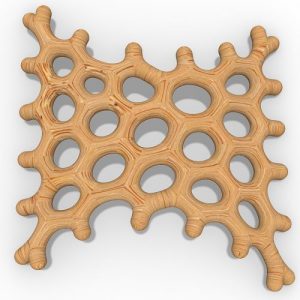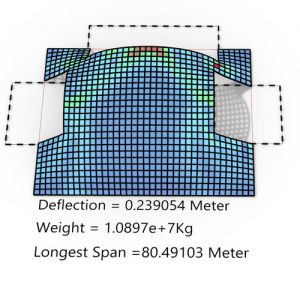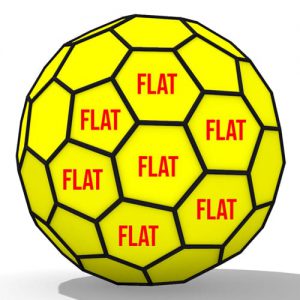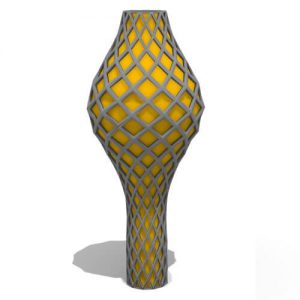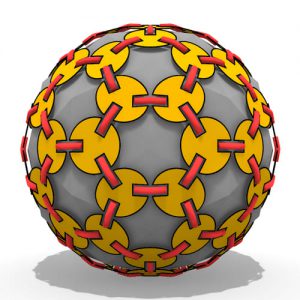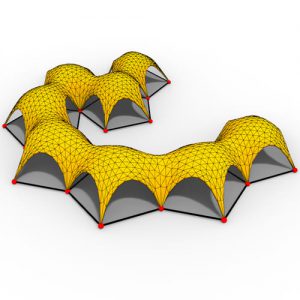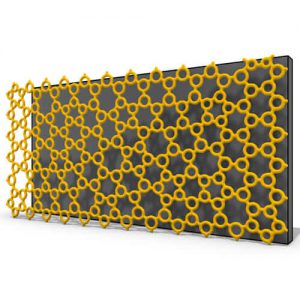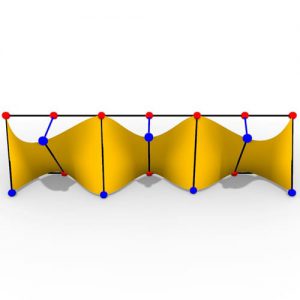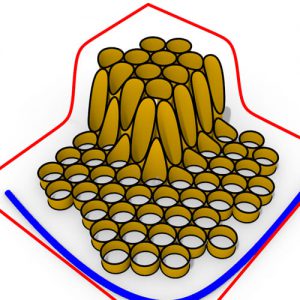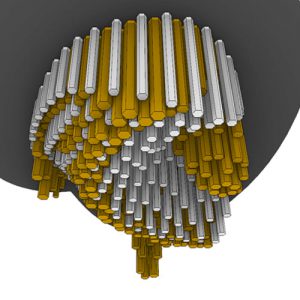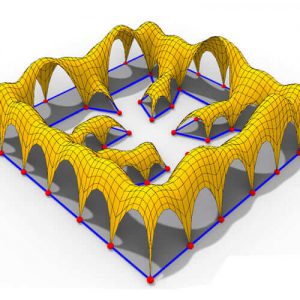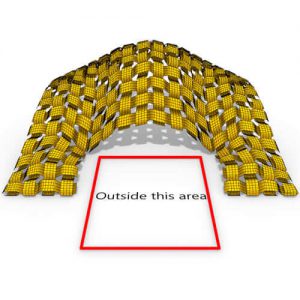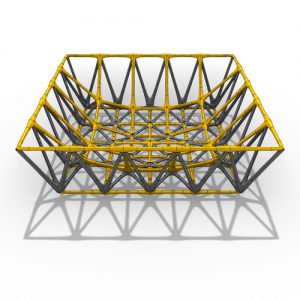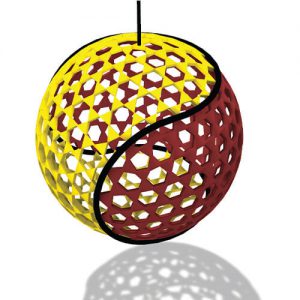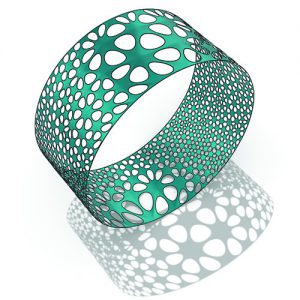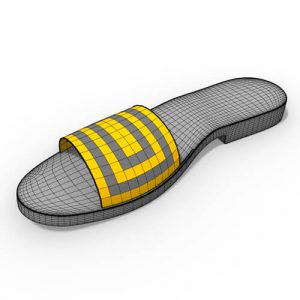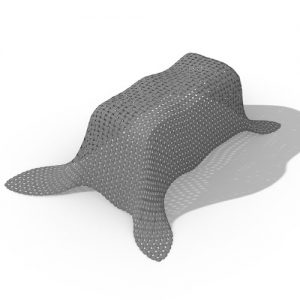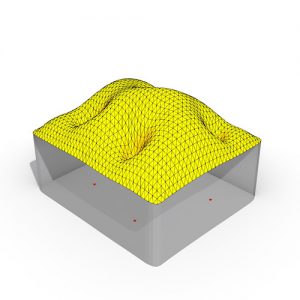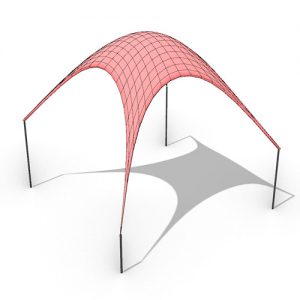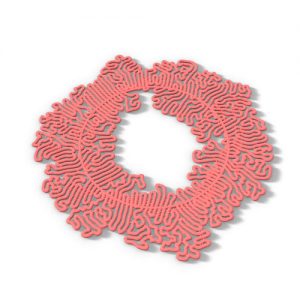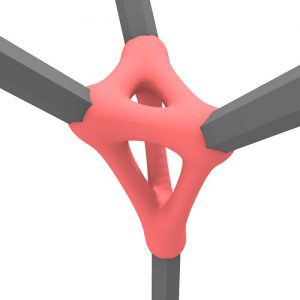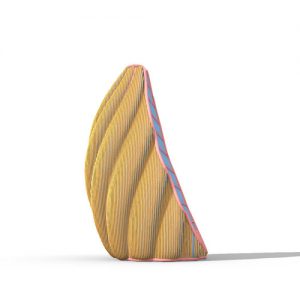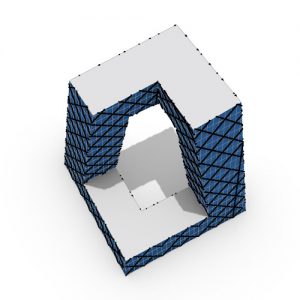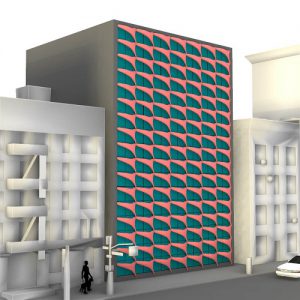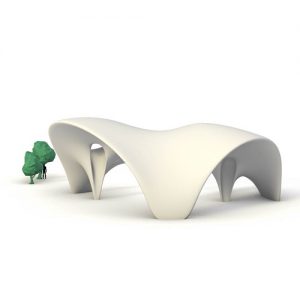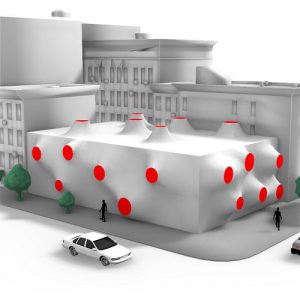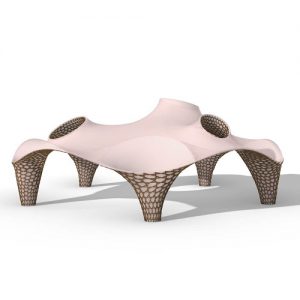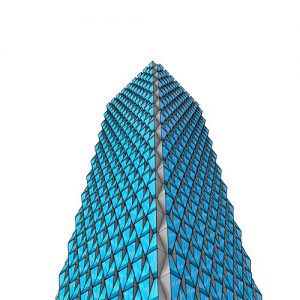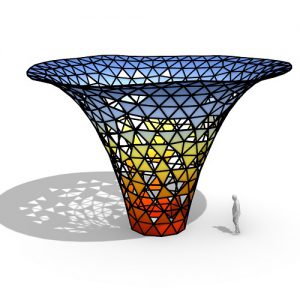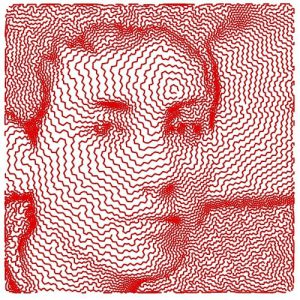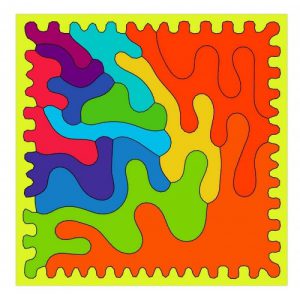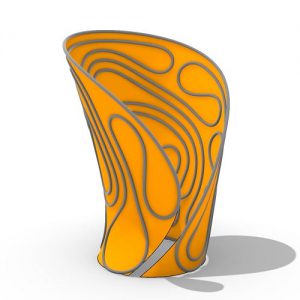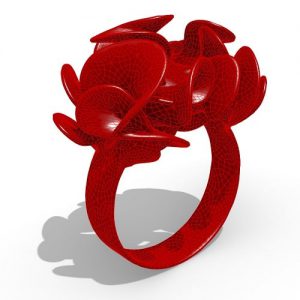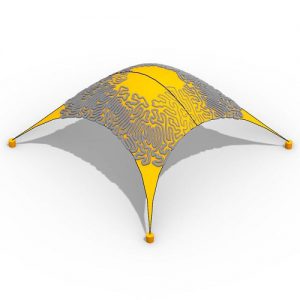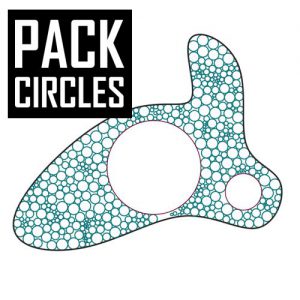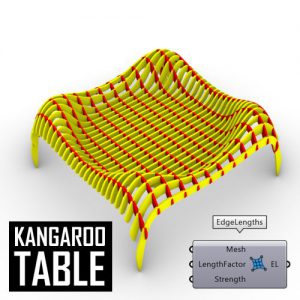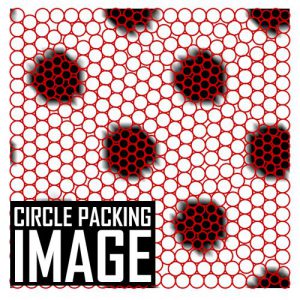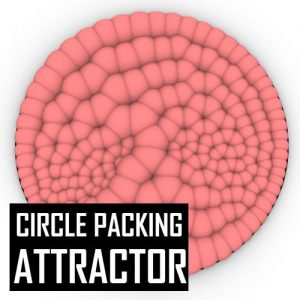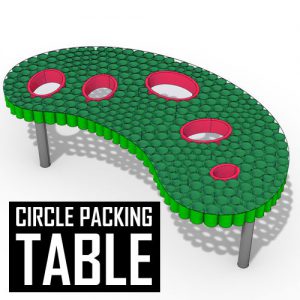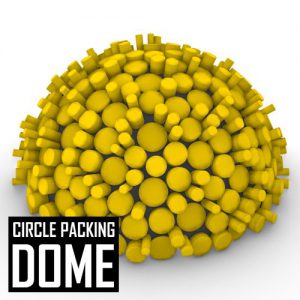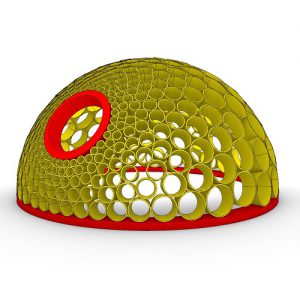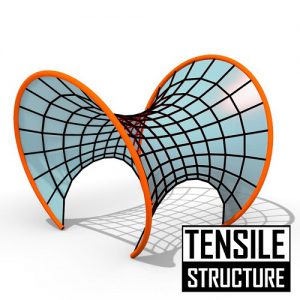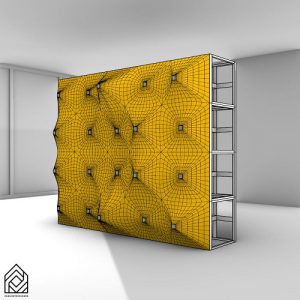In this Grasshopper Kangaroo example file you can design a parametric earring using the circle packing technique.
In this Grasshopper Tutorial for beginners you will learn how to use the Sphere collide component to generate evenly distributed holes on a NURBS surface.
In this Grasshopper Kangaroo example file, you can circle pack a mesh using the "TangentIncircles" component.
In this Grasshopper Kangaroo tutorial, you can discover how to simulate the flow of a series of particles on a solid and then convert it into a mesh.
In this Grasshopper tutorial, you can learn how to generate Perlin noise on a surface and convert it into a solid.
In this Grasshopper Kangaroo tutorial, we will model a parametric mesh pavilion by simply defining the top curve and the location and profile of the columns.
In this Grasshopper Kangaroo tutorial, we will learn how to model a parametric tower by defining two curves and then diagonalizing the mesh.
In this Grasshopper Kangaroo tutorial, we will learn how to create a mesh with controllable anchor points and n-gon polygons.
In this Grasshopper Kangaroo tutorial, we will use an algorithm based on a closed polyline and curve inner boundaries to model a parametric structure.
In this Grasshopper Kangaroo tutorial, we will use the EdgeLengths component to design a simple tensile structure.
In this Grasshopper Kangaroo Millipede example file, you can simulate a rectangular concrete shell under pressure with openings.
In this Rhino Grasshopper Kangaroo tutorial, we are going to planarize a series of ngon meshes using the CoPlanar component in the Kangaroo plugin.
In this grasshopper example file you can convert a Mesh with a u,v direction to a Nurbs surface by using the network surface component.
In this example file you can convert a mesh to a series of diamond panels with thickness and windows.
In this Grasshopper Example File, you can design a Parametric Connection using the kangroo and parakeet plugins.
In this Grasshopper Example File, you can design a parametric tensile Structure using the parakeet and Kangaroo plugins.
In this Grasshopper Example File, you can design a Circle Packing Wall pattern using the Kangaroo and Dendro plugins .
In this Grasshopper Kangaroo example file, You can design a parametric surface by defining a series of points locations.
In this Kangaroo example file, You can create a circle packing pattern and then control it with a base surface.
In this Grasshopper Kangaroo Example File, you can design a Parametric Chandelier from any closed planar curve.
In this Grasshopper Kangaroo example file, You can design a tensile structure using the Parakeet plugin to generate the differential growth base pattern.
In this kangaroo example file, You can design a parametric tensile structure in a boundary using the Mesh+ and Weaverbird plugin.
In this Grasshopper kangaroo example file you can learn how to use the Leopard plugin to select a mesh edge easily in Rhino and then manipulate it in Grasshopper.
In this Grasshopper Kangaroo example file, you can use the region union component to create a parametric pavilion.
In this Grasshopper Lunchbox example file, you can design a smooth space truss structure.
In this Grasshopper Example File, You can model a triangulated lamp shade using the Fennec ,Mesh+ and Kangaroo Plugins.
In this Grasshopper Kangaroo example file, you can split the edges of a mesh into 2 groups of warp and weft.
In this Grasshopper Kangaroo example file, you can generate 3d Patterns on a surface by defining point attractors.
In this Grasshopper Dendro example file, you can use the Kangaroo2 plugin to design a series of parametric shoes.
In this Grasshopper example file, you can use the Stripper plugin to design different patterns on a slipper.
In this Grasshopper example file, you can convert an image into a mesh using the kangaroo2 plugin.
In this Grasshopper example file, you can simulate a piece of Cloth behaviour in collision with a solid object using the Kangaroo plugin.
In this grasshopper example file, you can create a parametric inflated roof by using the Kangaroo plugin.
In this grasshopper kangaroo example file, you can simulate an elastic material by using the Kangaroo anchor component.
In this Grasshopper example file, you can simulate a differential growth pattern on a curve by using the sphere collide component from the Kangaroo plugin .
In this Grasshopper script, you can mode a parametric 3d connection using the Gelatinous cube Plugin and the Distance Curve Charge component.
In this Grasshopper Example File,You can model a parametric tower inspired by the Panda Tower by UDG. Atelier Alpha.
In this grasshopper example, you can model a parametric building inspired by the CCTV Headquarters by Rem Koolhaas.
In this Grasshopper Example File,You can model the Kolon One & Only Tower's facacde by using the kangaroo plugin.
In this Grasshopper Example File, you can use the Kangaroo plugin to model a parametric roof similar to the Serpentine Sackler Gallery by the Zaha Hadid Architects.
In this Grasshopper Example File, you can use the Kangaroo 2 plugin to model a Parametric tensile structure similar to the Skysong (ASU Campus).
In this Grasshopper Example File, you can design a parametric building Inspired by the London Shooting Venue and by using the Kangaroo plugin.
In this Grasshopper Example File,You can model a parametric roof inspired by The Centre Pompidou-Metz by Shigeru Ban .
In this grasshopper example file you can model a parametric tower inspired by the Beijing Tower.
In this grasshopper example, you can generate a parametric Canopy with random panels.
In this grasshopper example, you can generate a parametric curve pattern from a colored mesh.
In this Grasshopper Example File, you can model a Differential Growth Puzzle using the Kangaroo Plugin.
In this grasshopper example, you can model a parametric Differential Growth pattern inspired by the Thallus Installation by Zaha Hadid Architects.
In this grasshopper example, you can model a ring inspired by the differential growth algorithm.
In this grasshopper example, you can generate a Differential Growth Pattern on a base mesh using the Kangaroo Plugin
In this Grasshopper Example File, you can model a parametric t-shirt covered with circles using the Kangaroo plugin and the circle packing components.
In this grasshopper example, you can generate a series of circles with variable radius inside a planar boundary.
In this Grasshopper Example File, you can model a parametric table by defining two curves and using the Kangaroo plugin to generate a relaxing mesh form.
In this Grasshopper Example File, you can control a series of circles by using a parametric colored mesh and using the Kangaroo Plugin.
In this Grasshopper Example File, you can generate a series of spheres by defining an initial curve and point attractors and also a boundary curve. The radius of the spheres will be increased until they hit the boundary and collide together.
In this Grasshopper Example File, you can model a parametric table using the circle packing technique and by using the Kangaroo Plugin.
In this Grasshopper Example File, you can model a circle packing dome using the Kangaroo Plugin.
In this grasshopper example file, you can model a dome shaped pavilion inspired by the "Packed Pavilion" using the Circle Packing algorithm and Kangaroo simulation.
In this Paracourse Lesson, we are going to model a parametric tensile structure using the Kangaroo plugin.
In this example file you can design a kinetic wall by creating a mesh and moving the anchors attached to the structure in the kangaroo 2 plugin.








